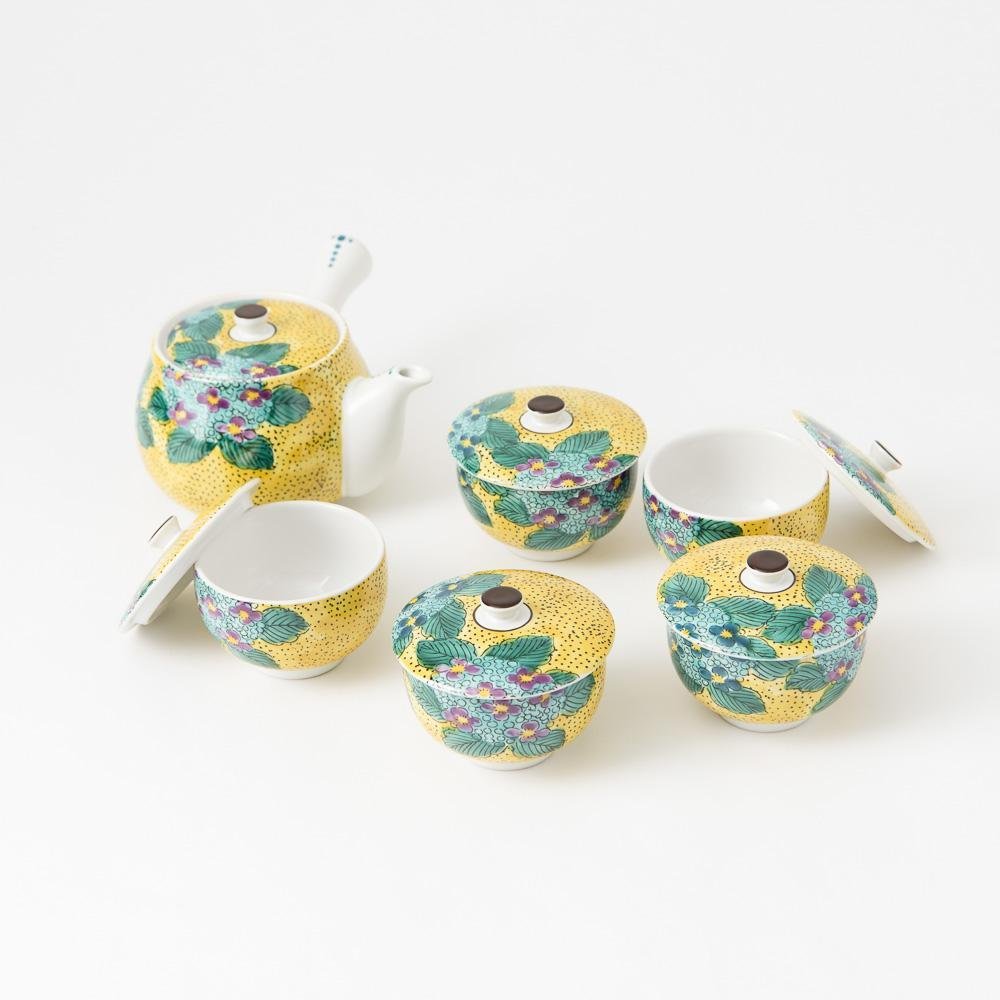
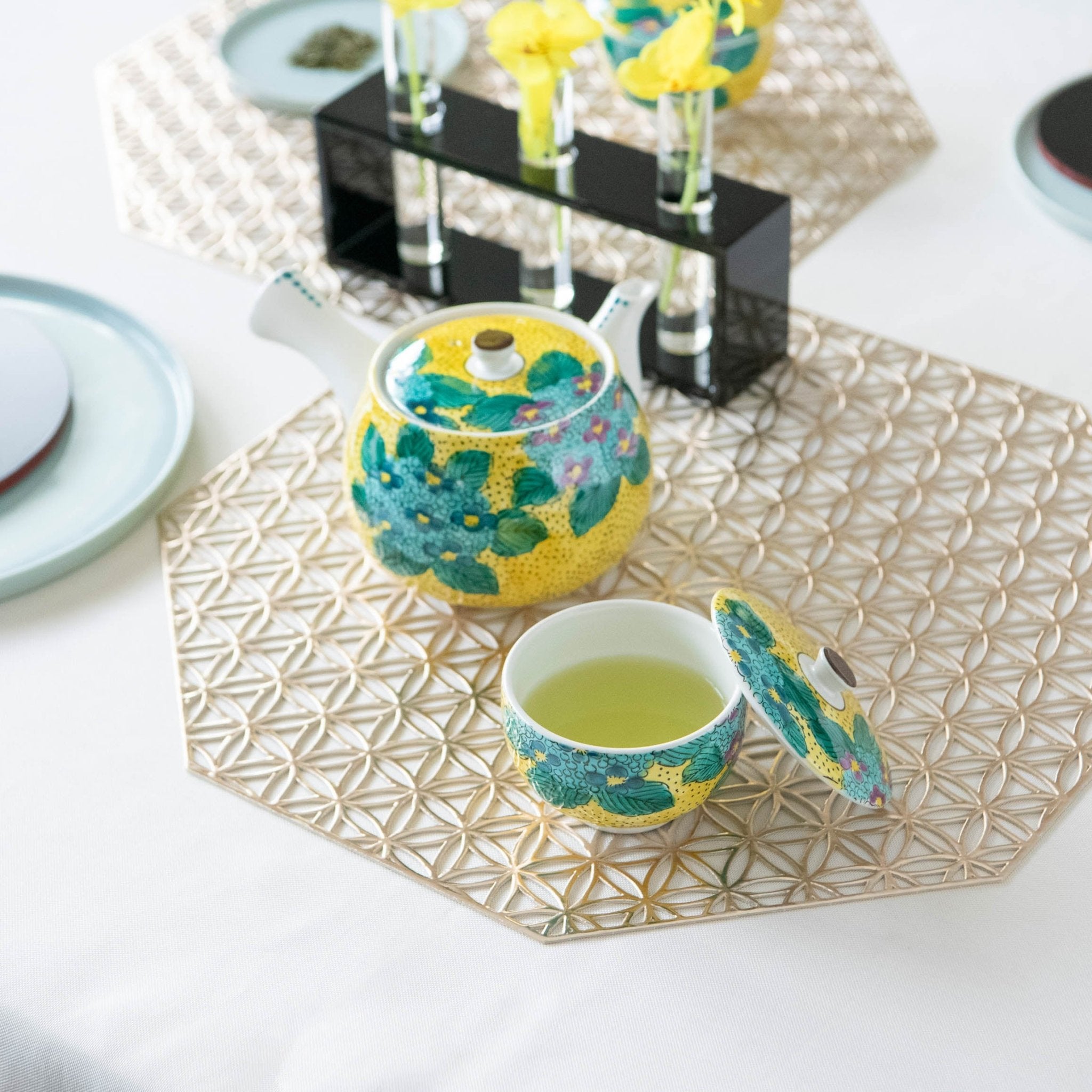
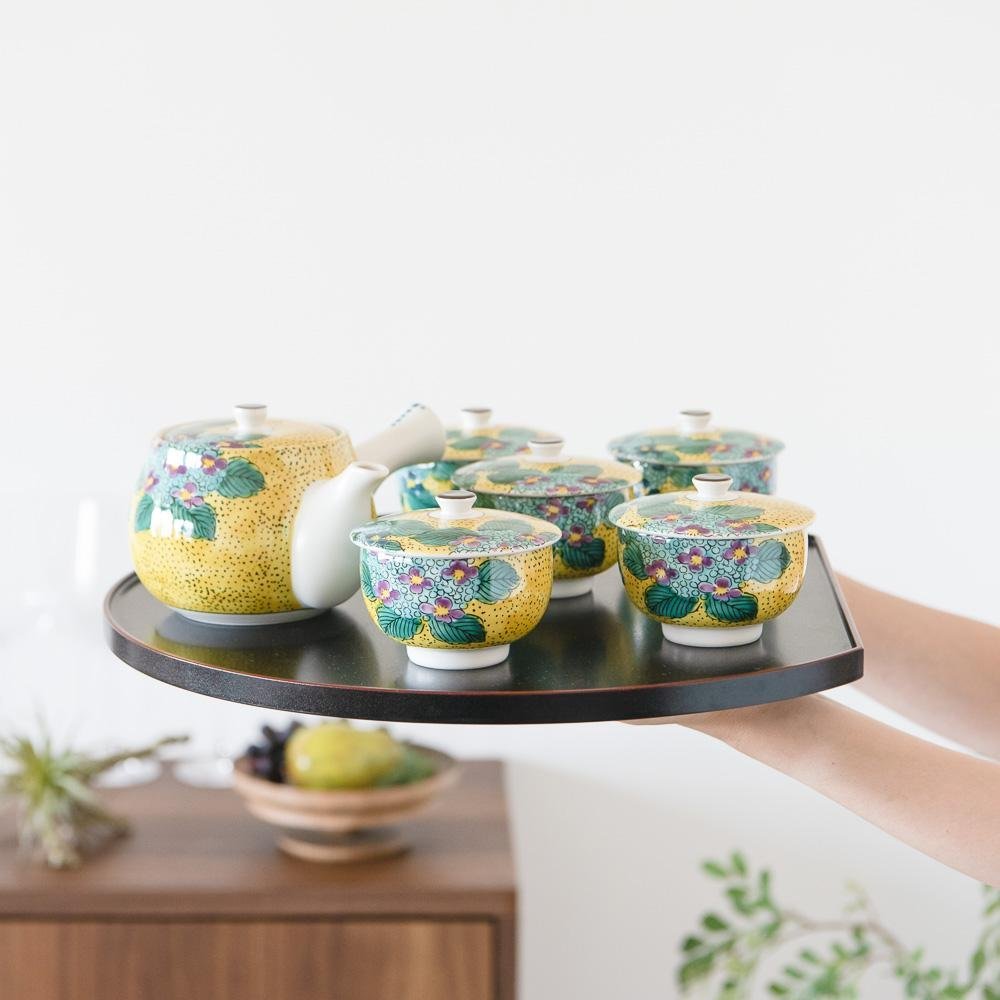
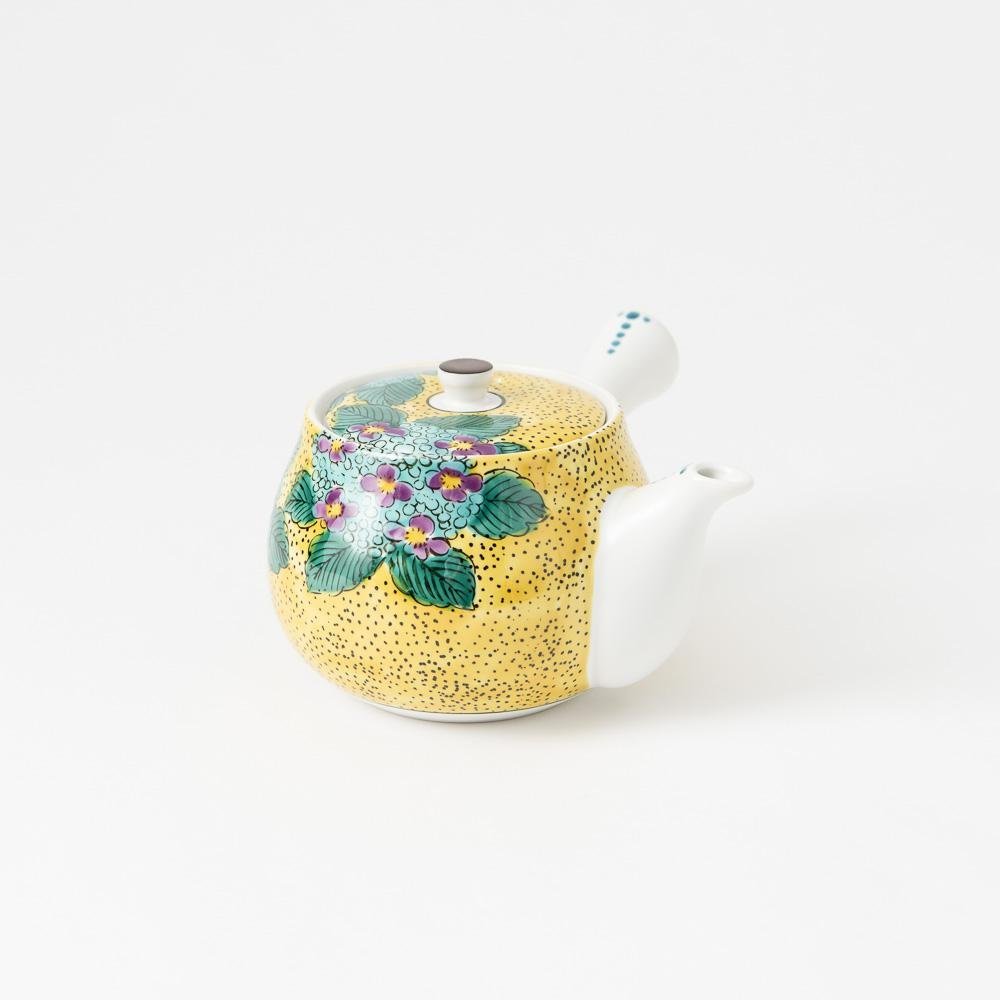
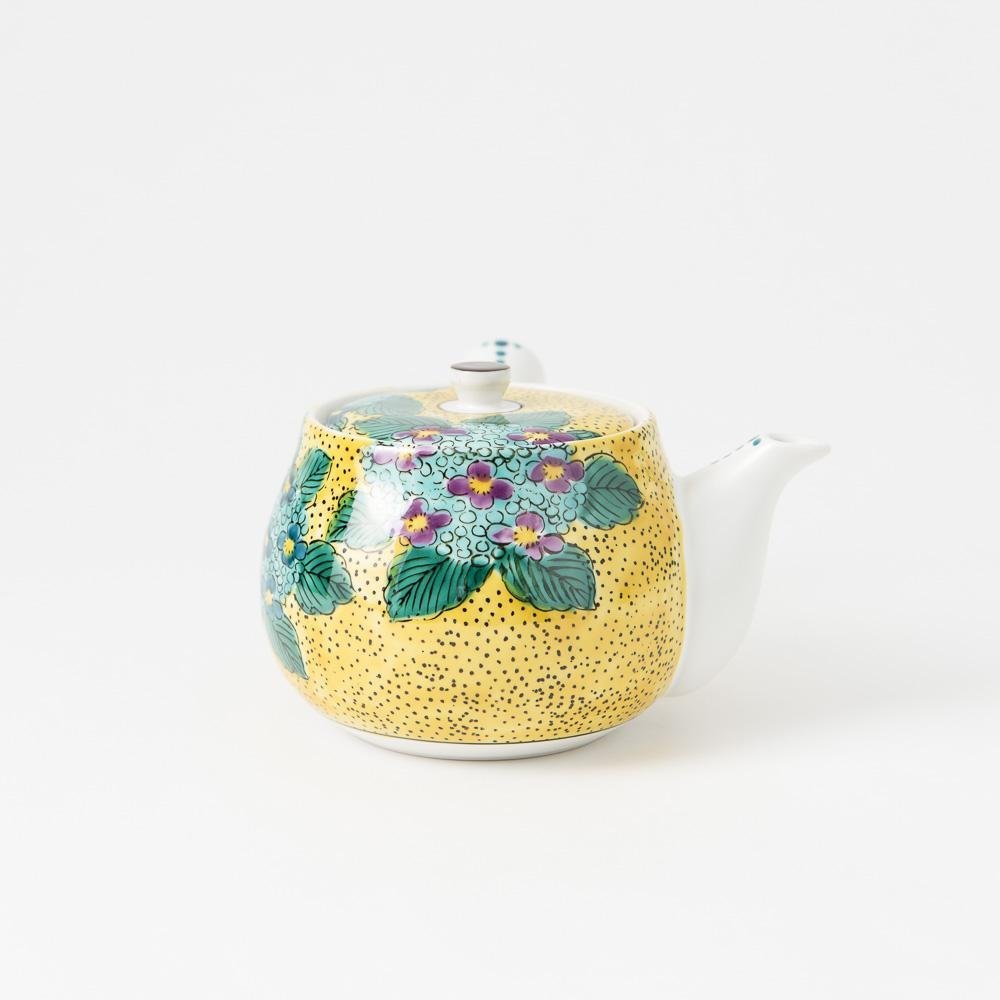
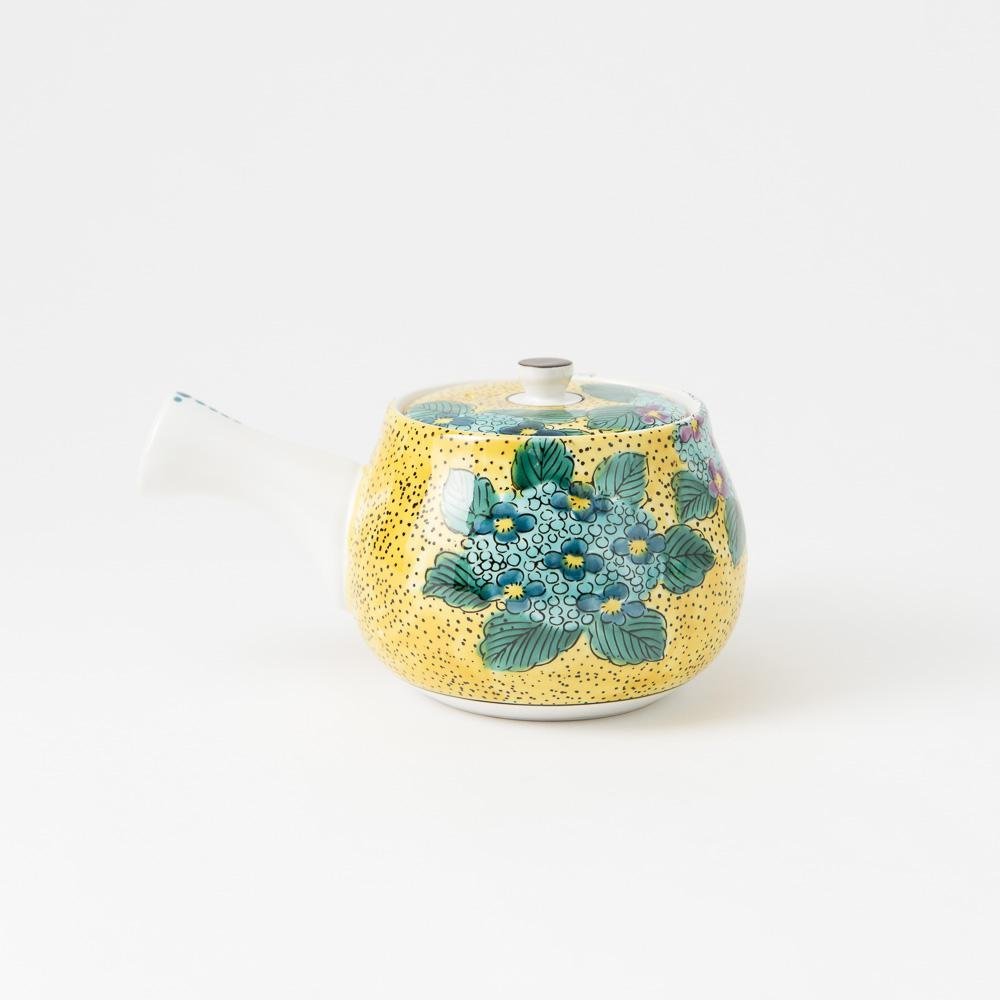
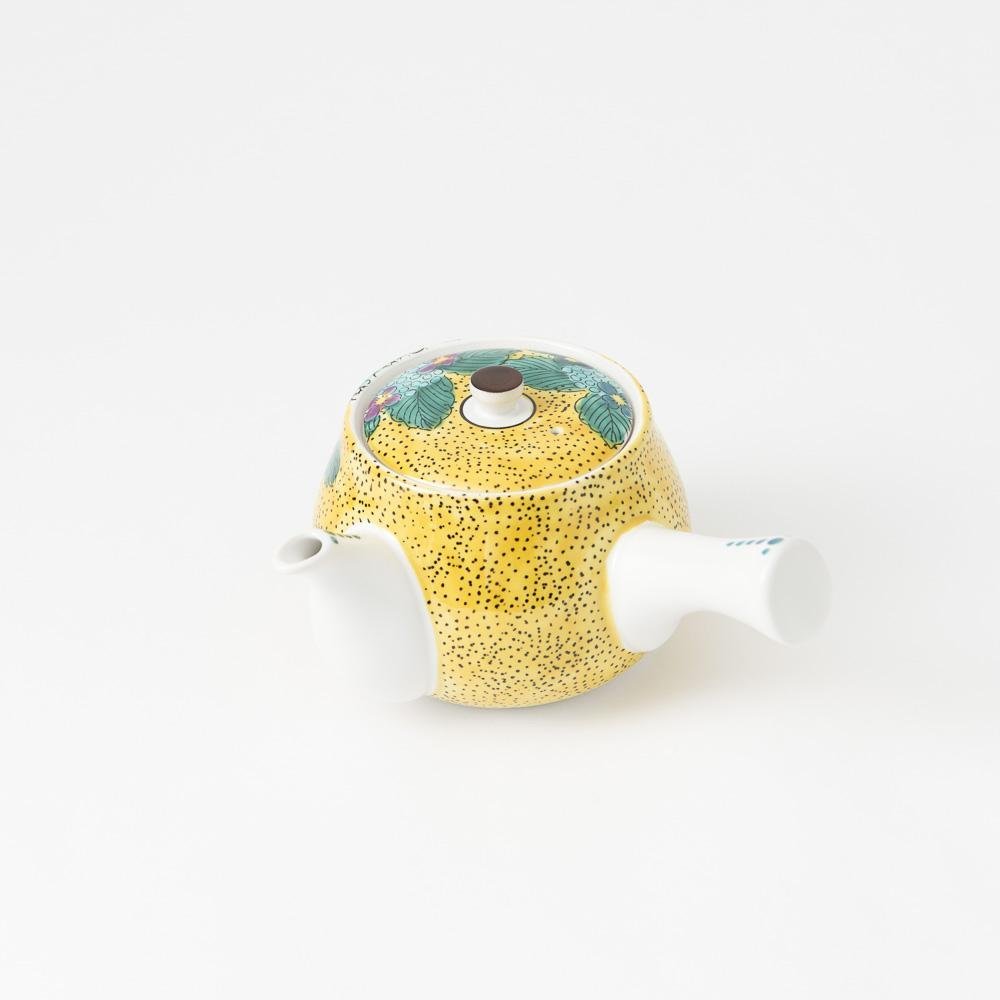
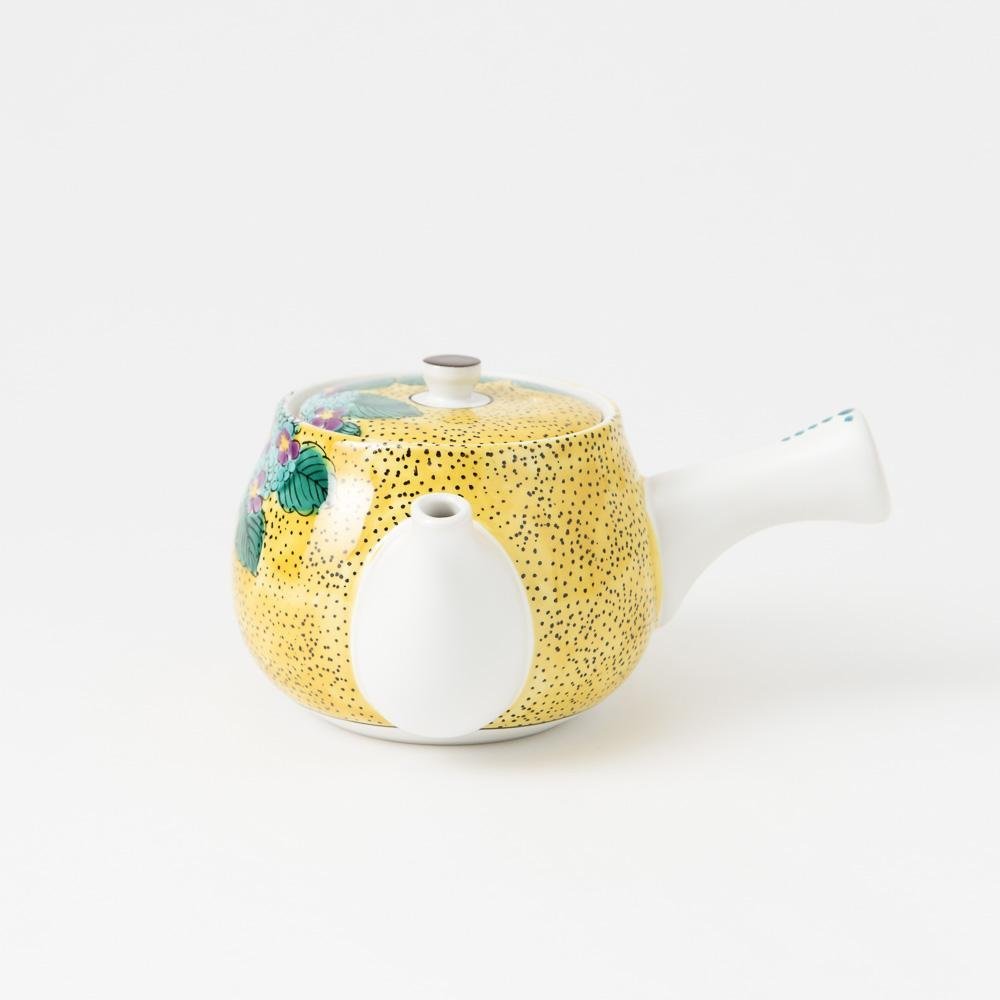
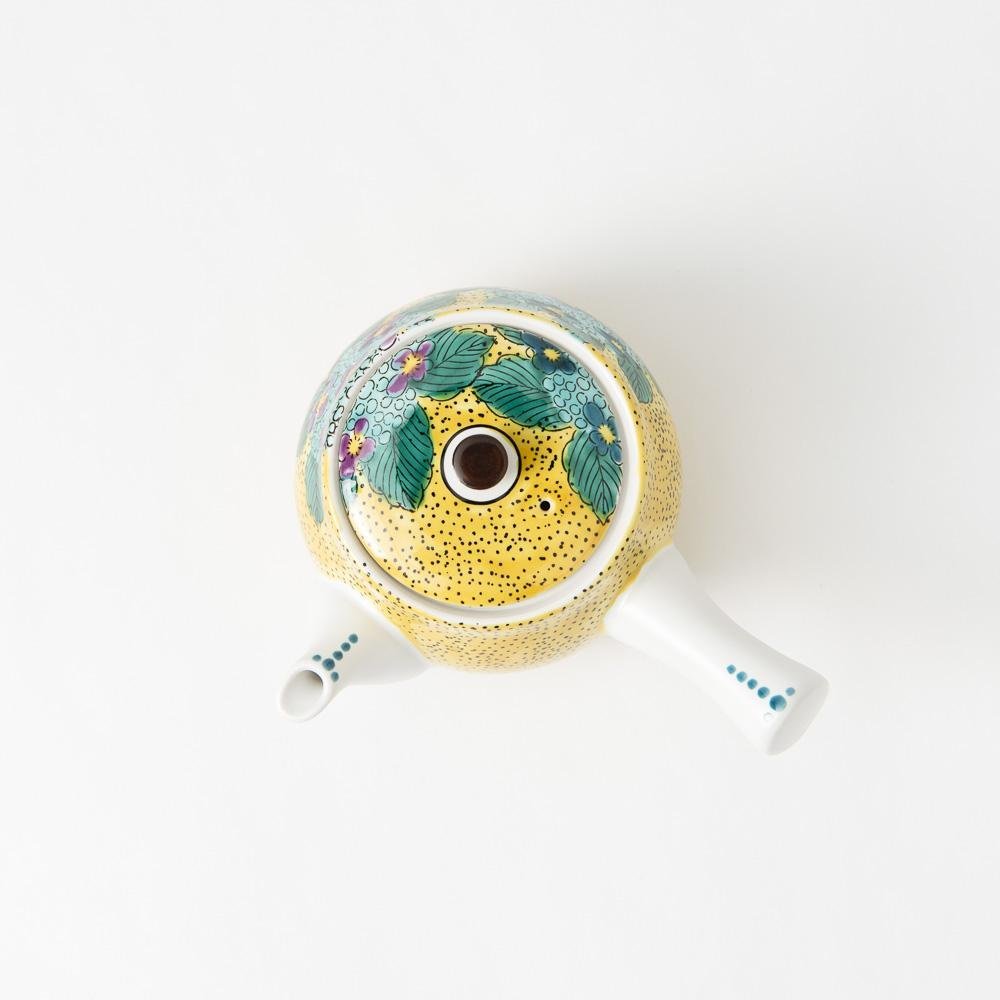
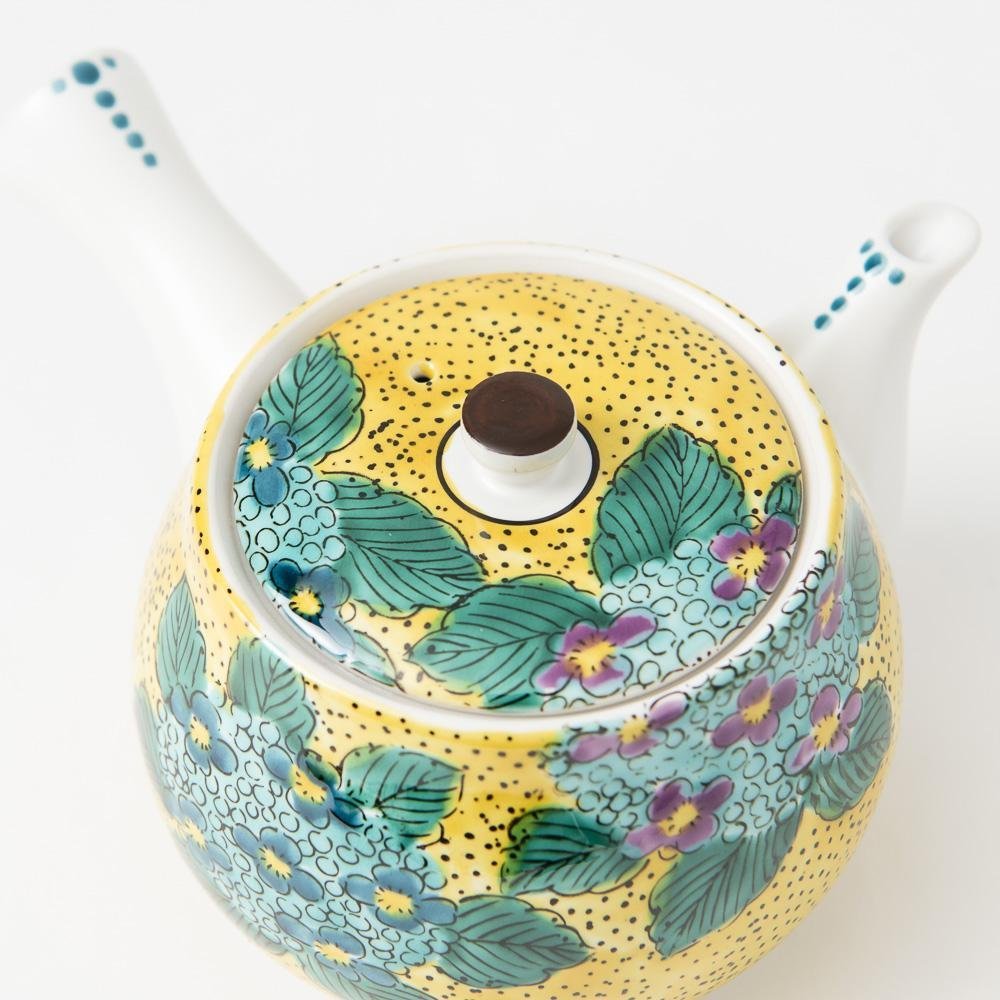
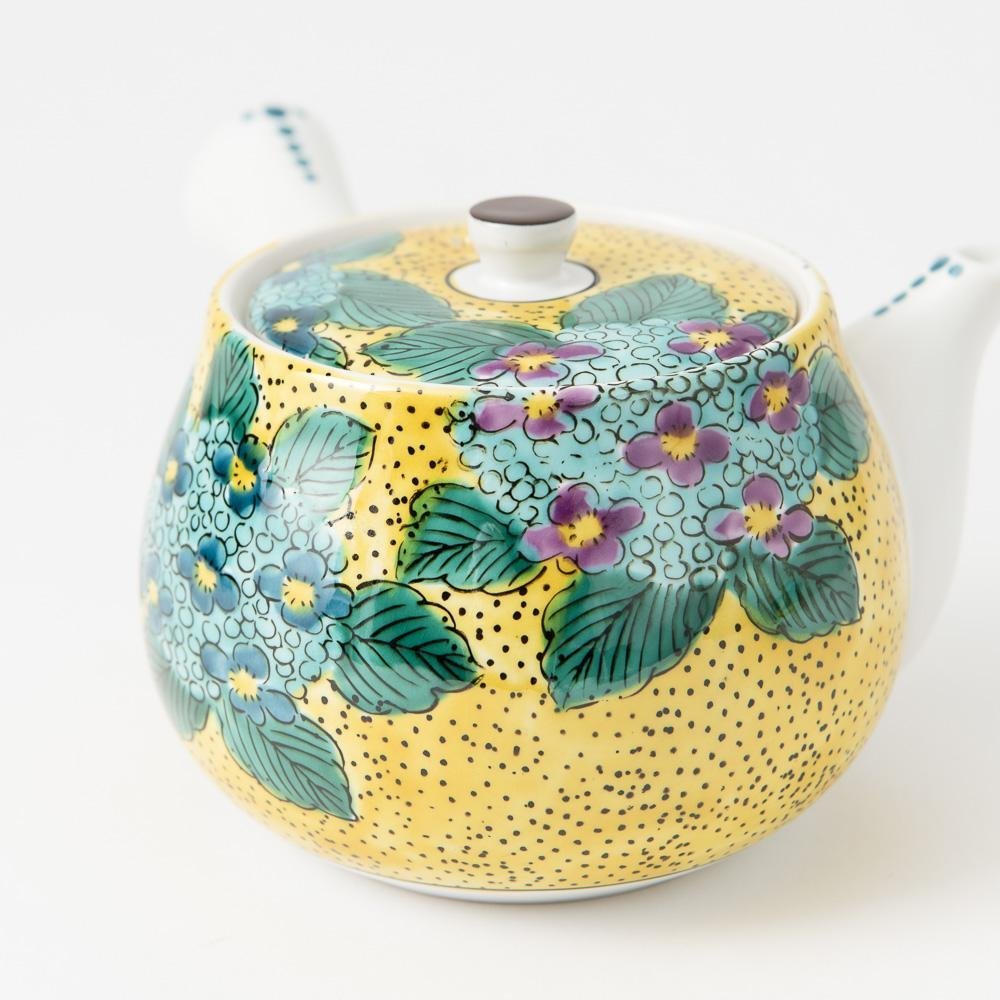
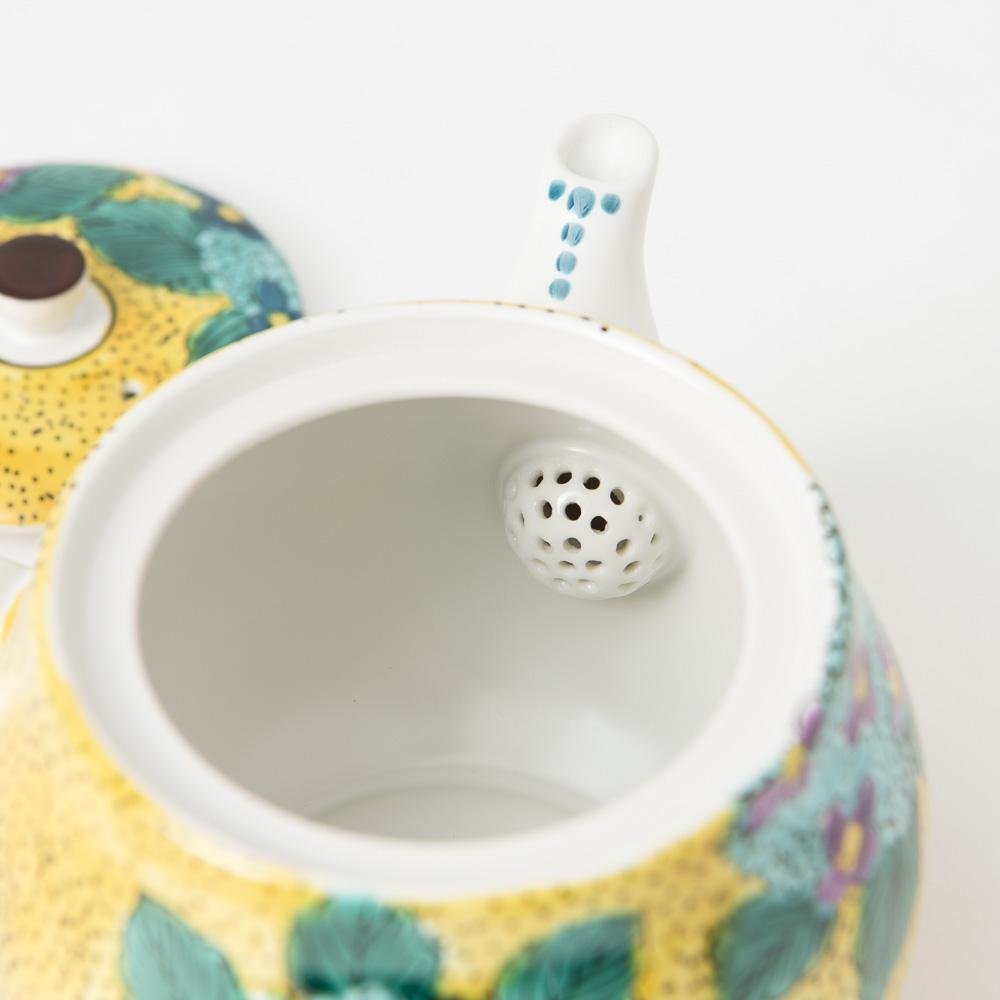
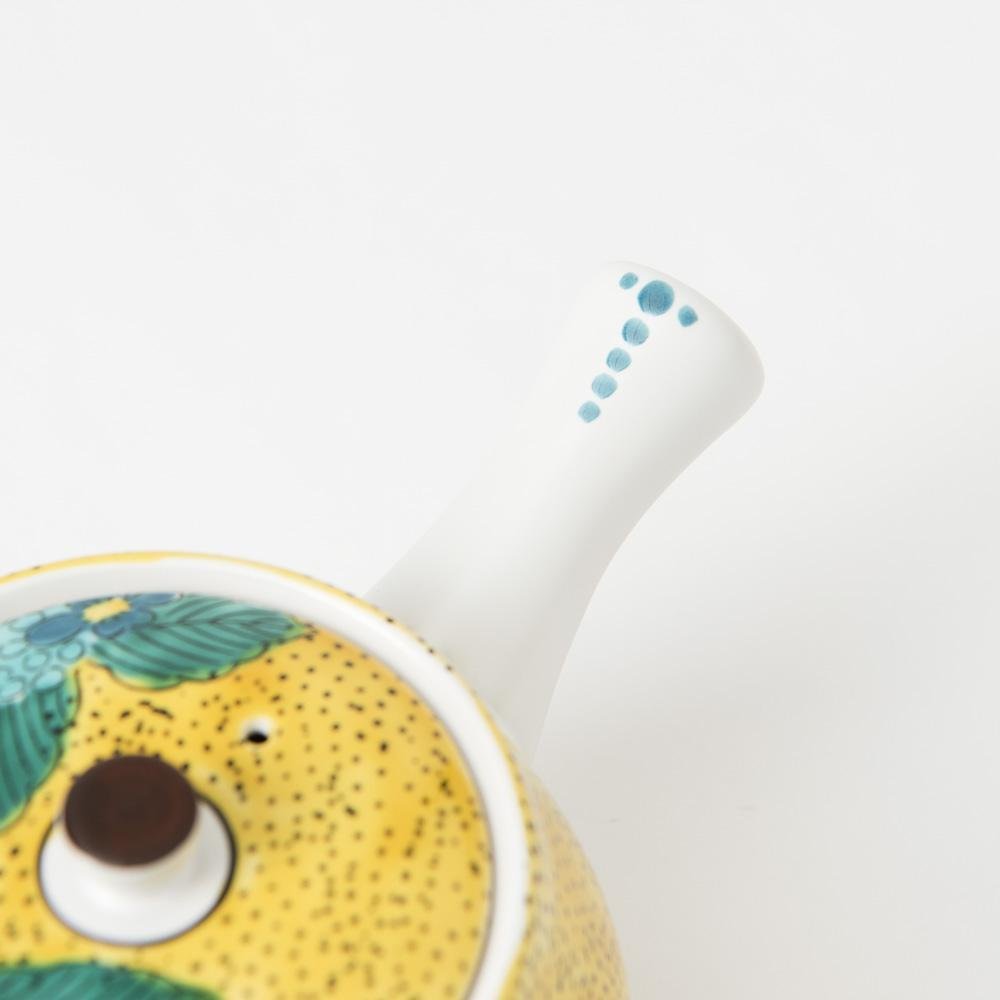
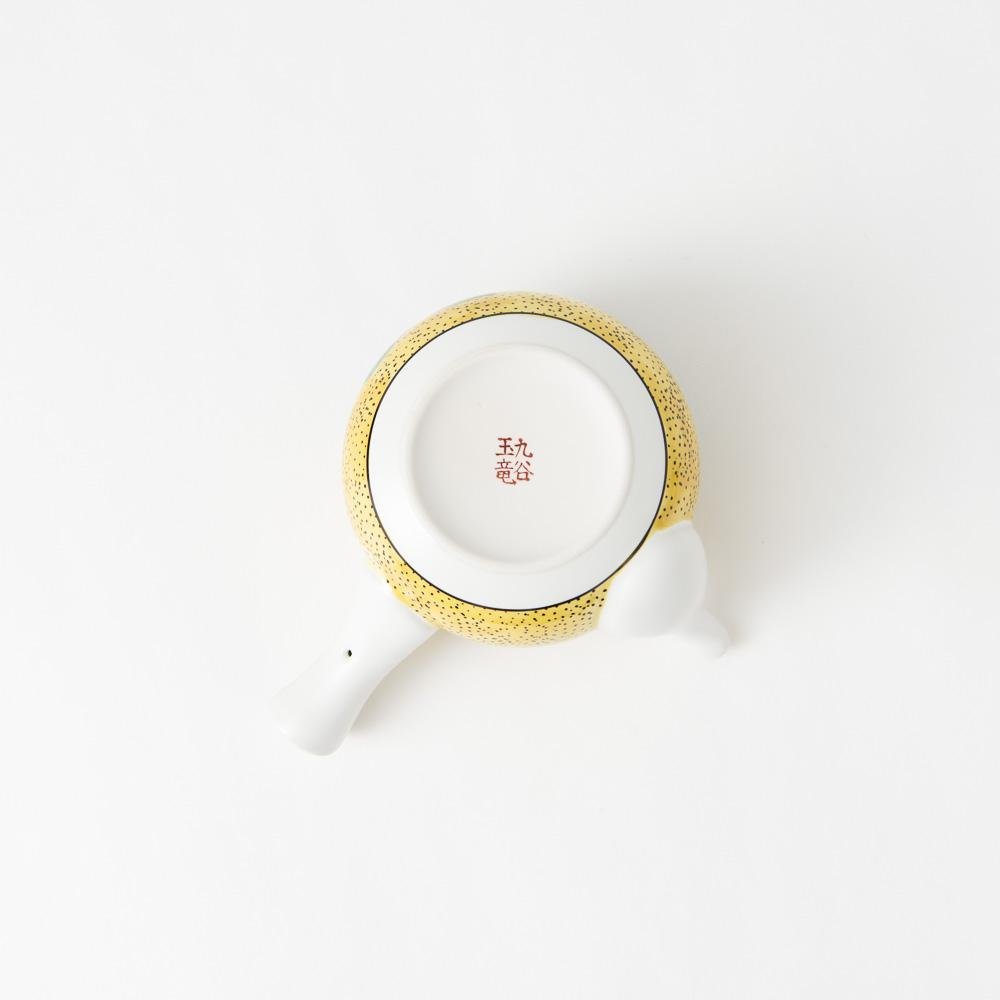
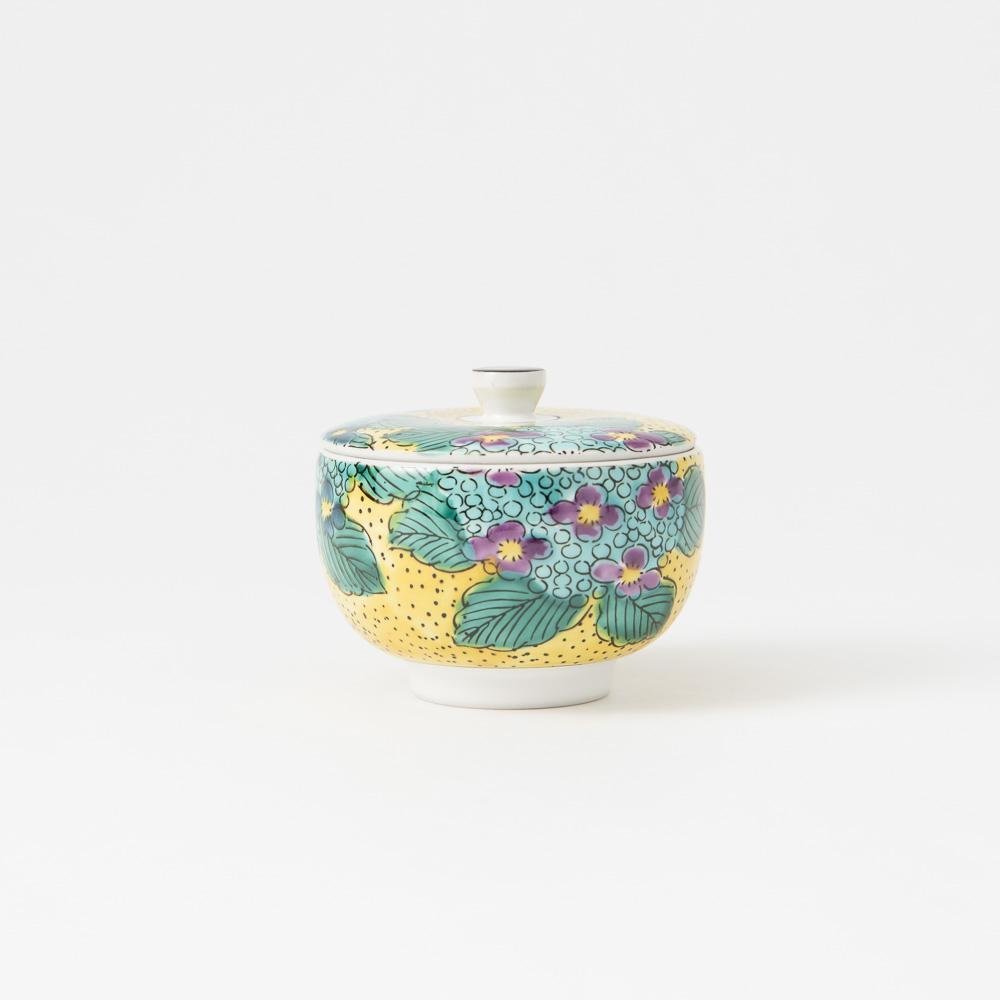
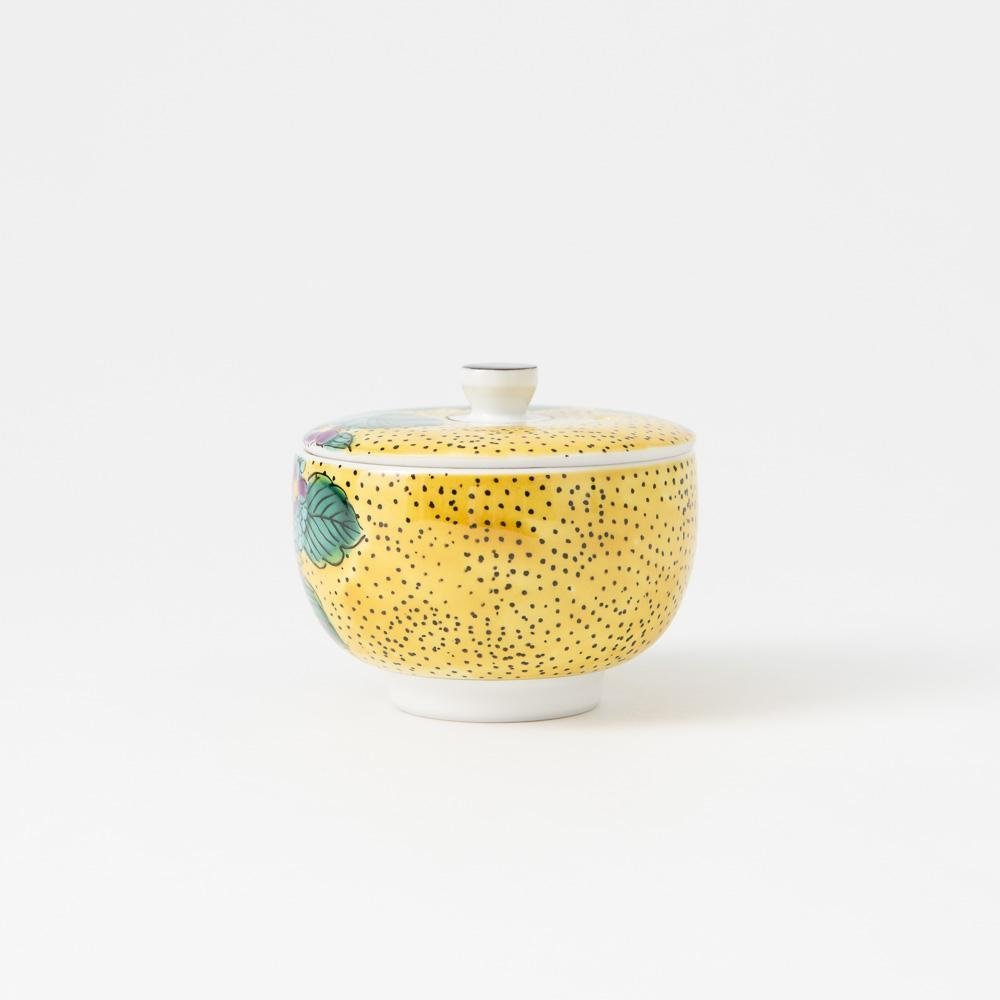
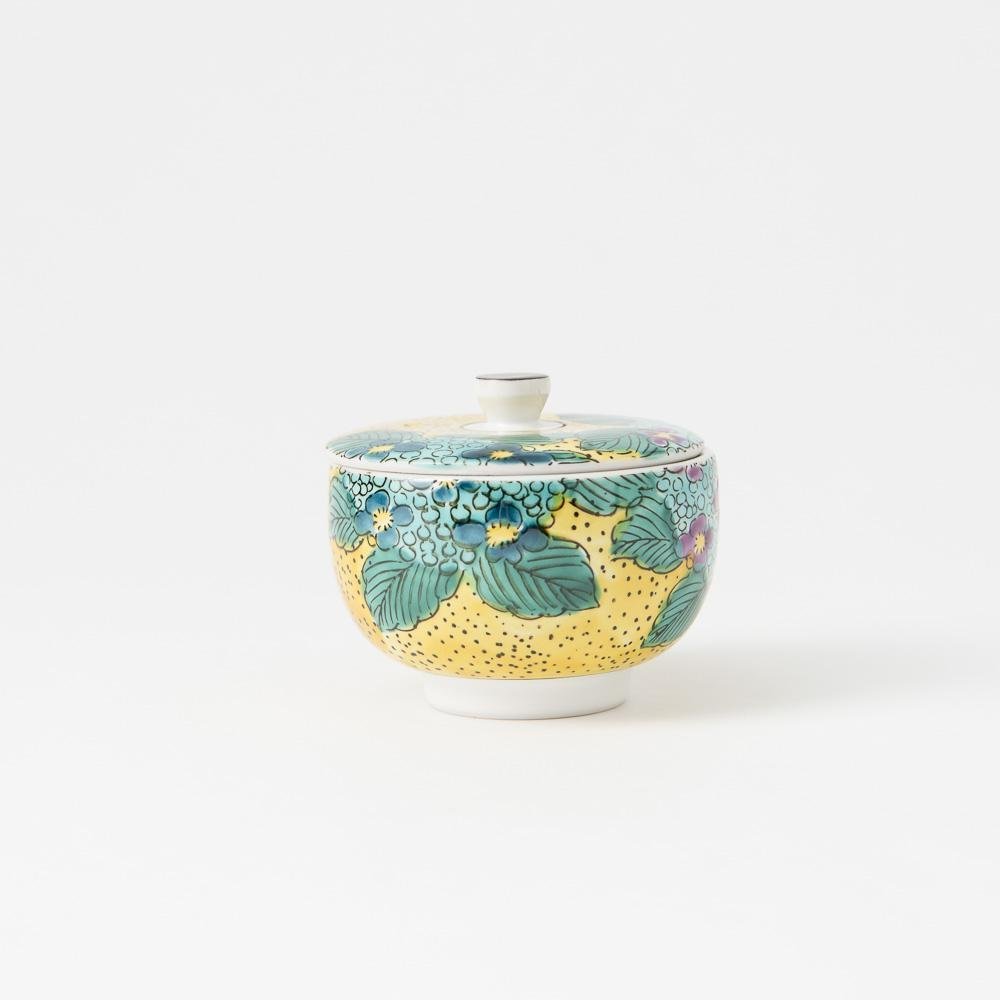
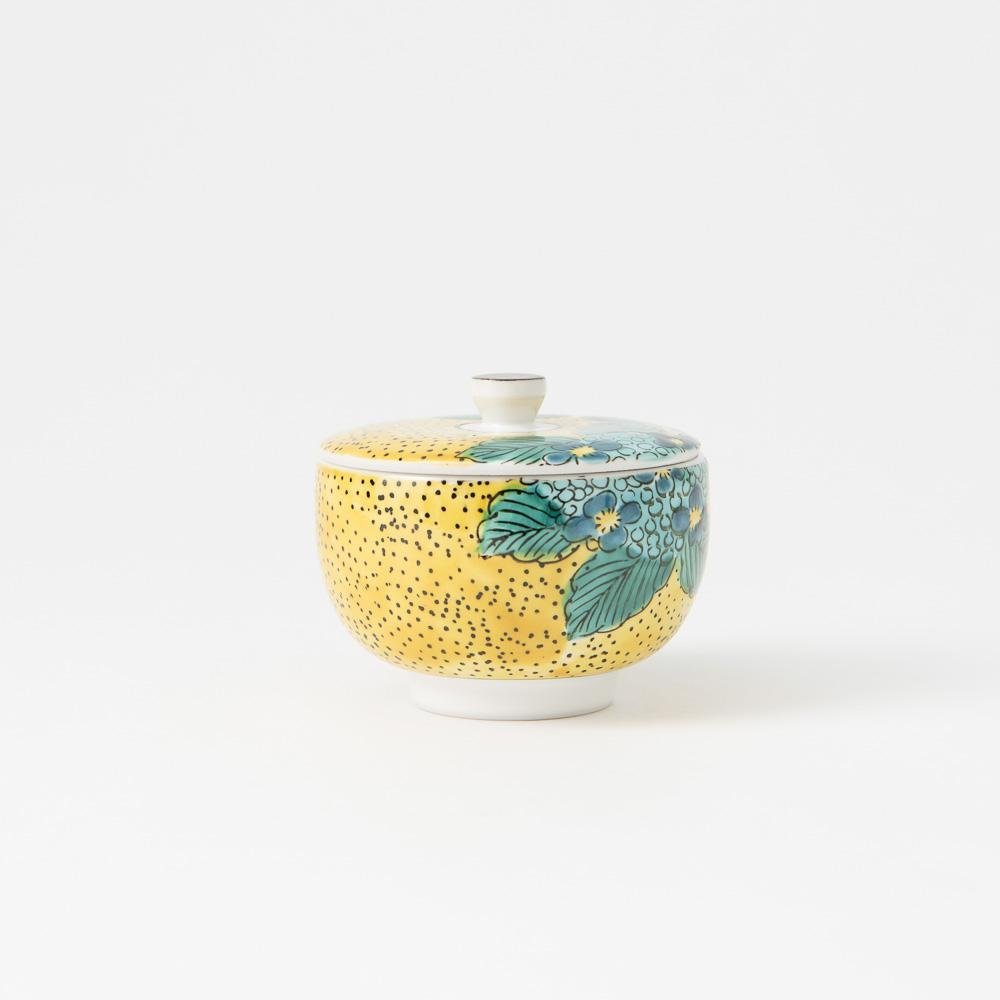
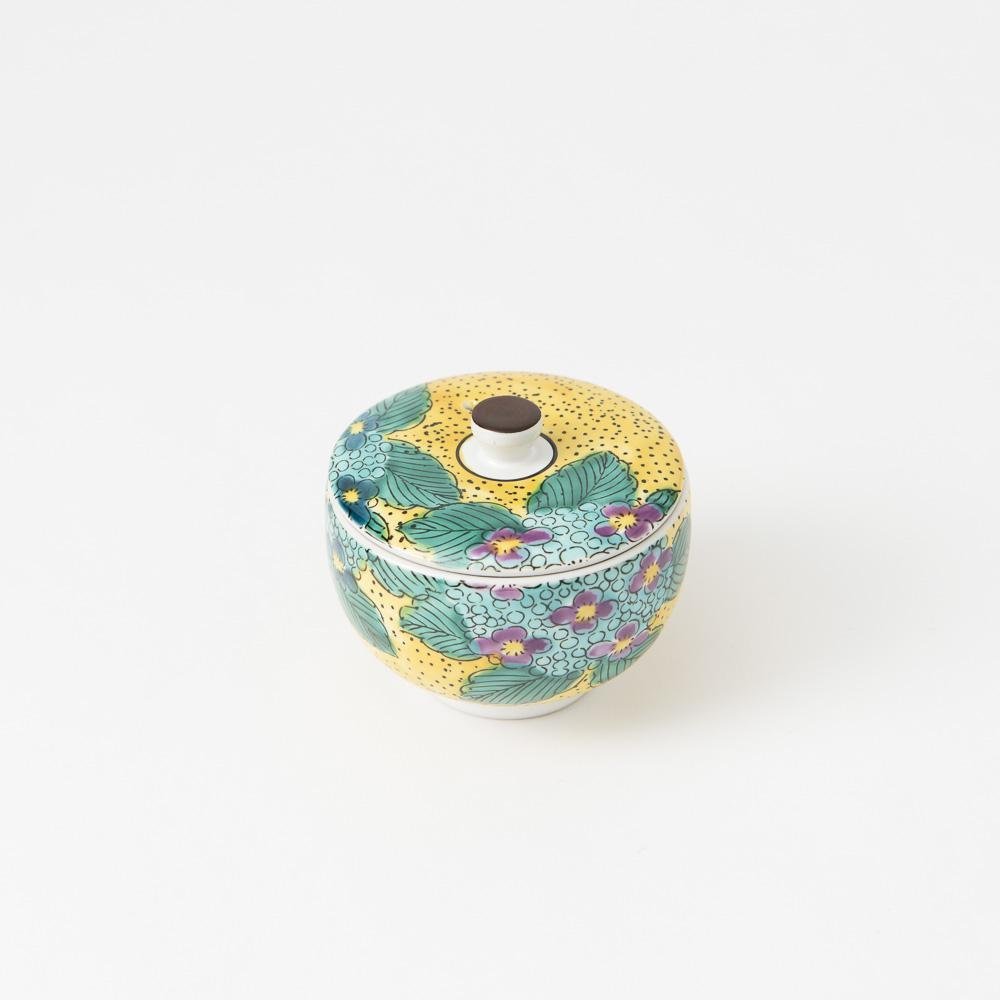
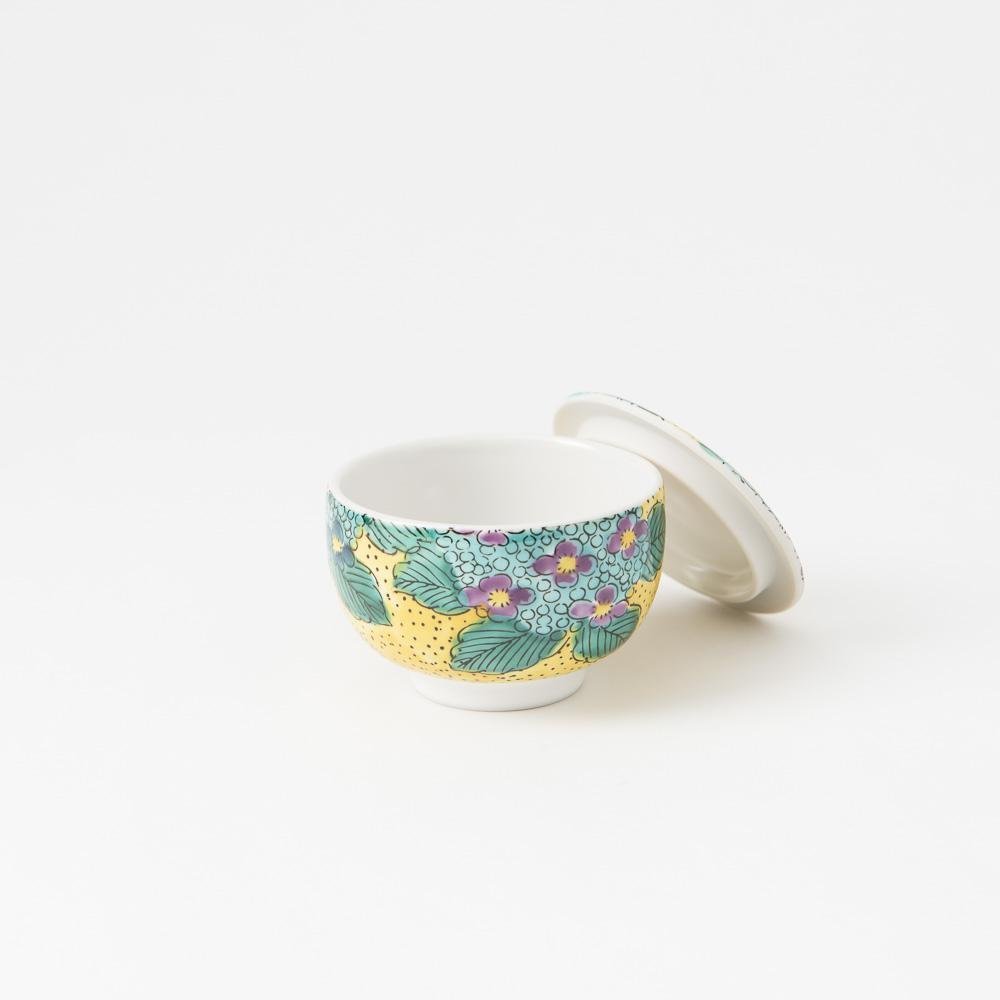
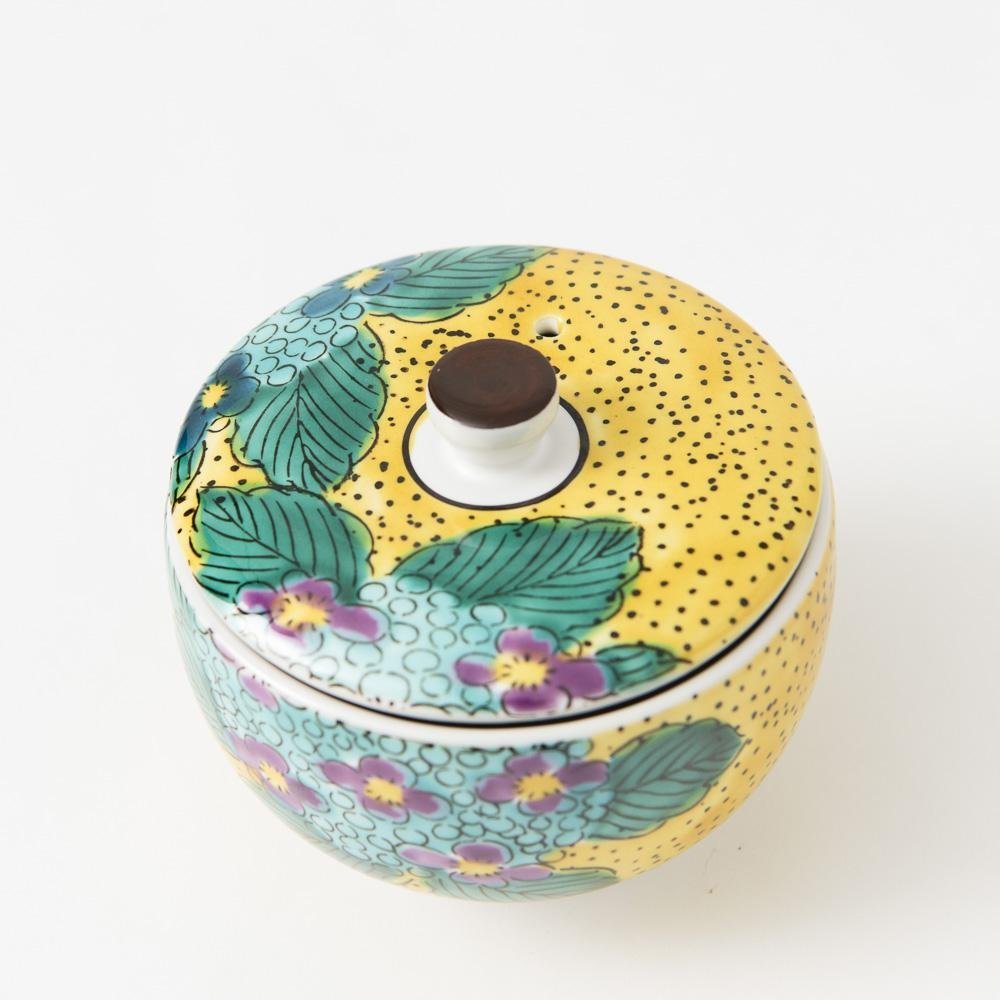
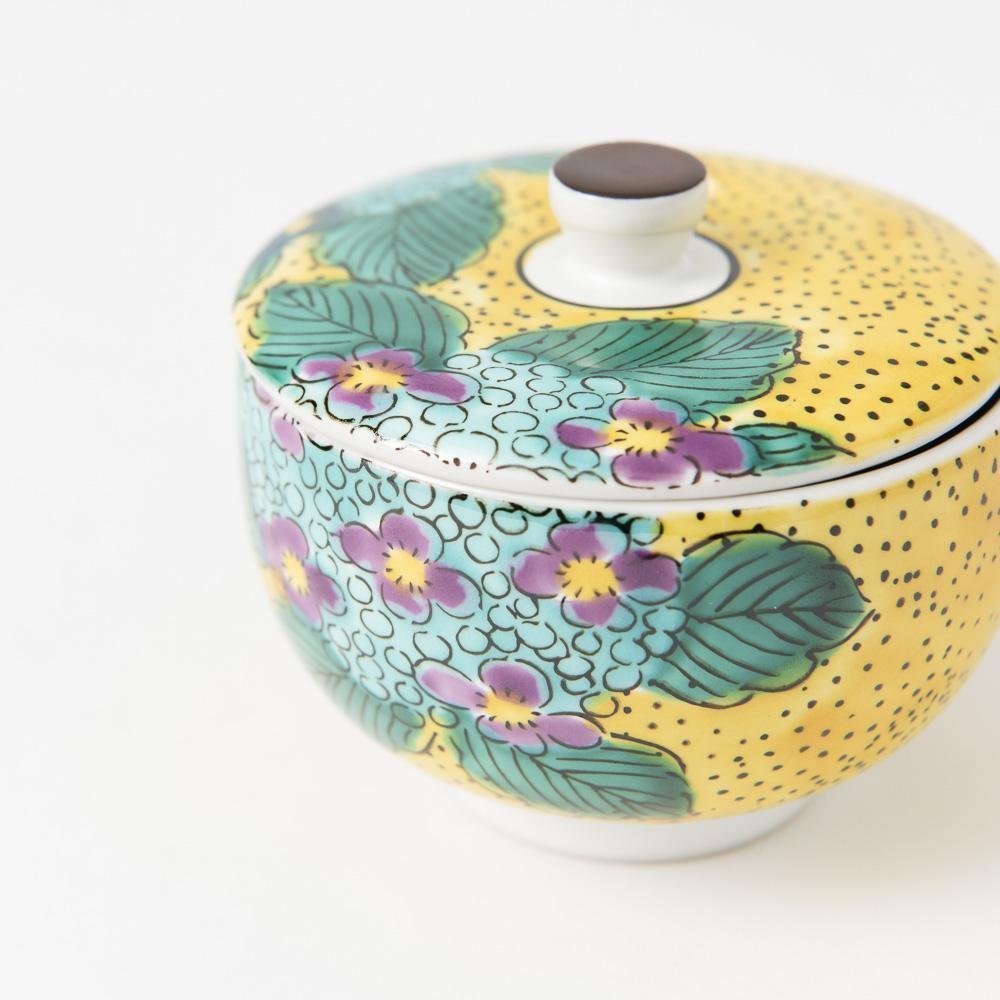
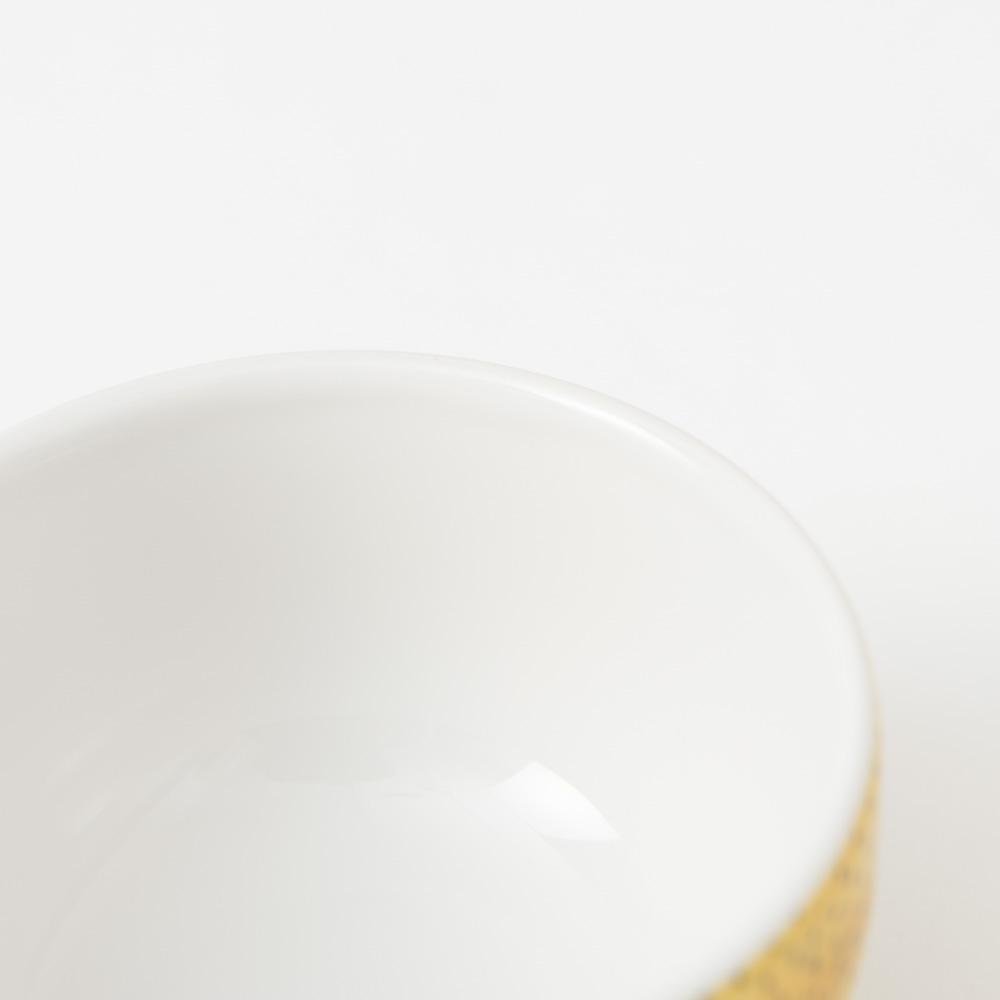
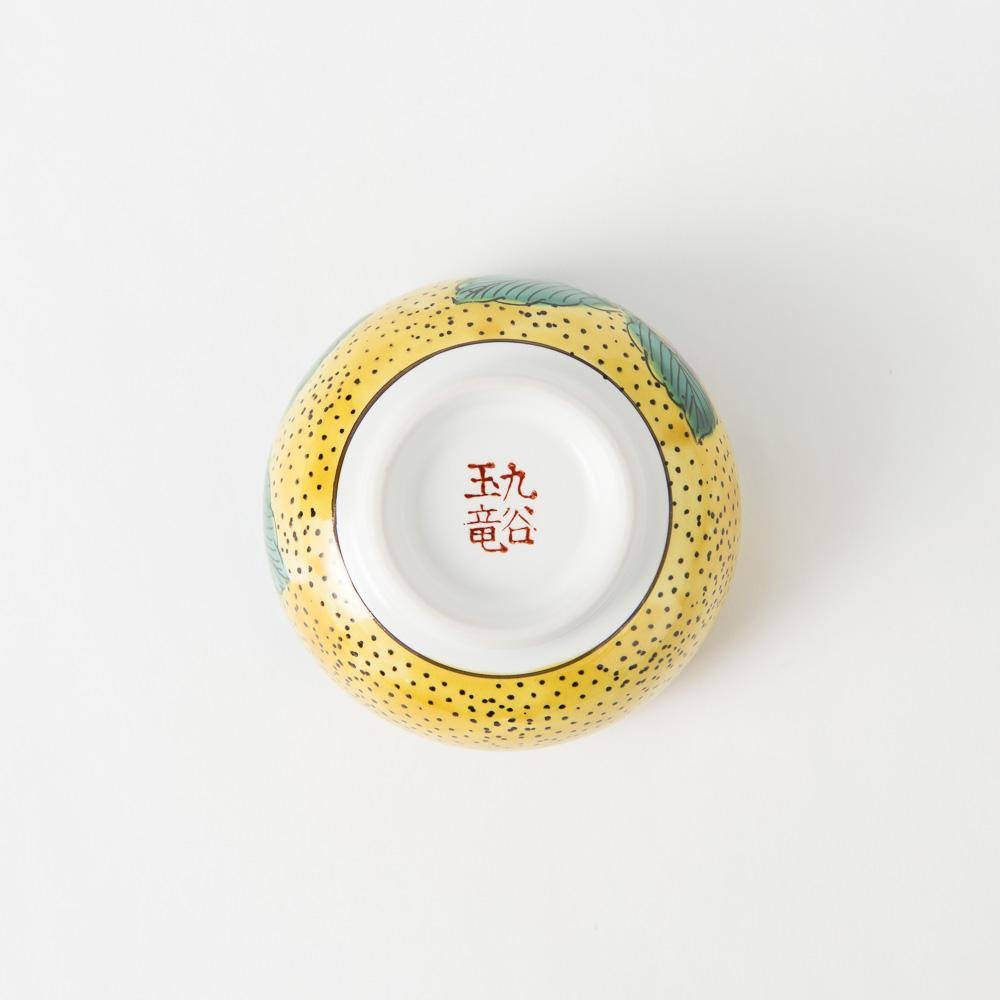
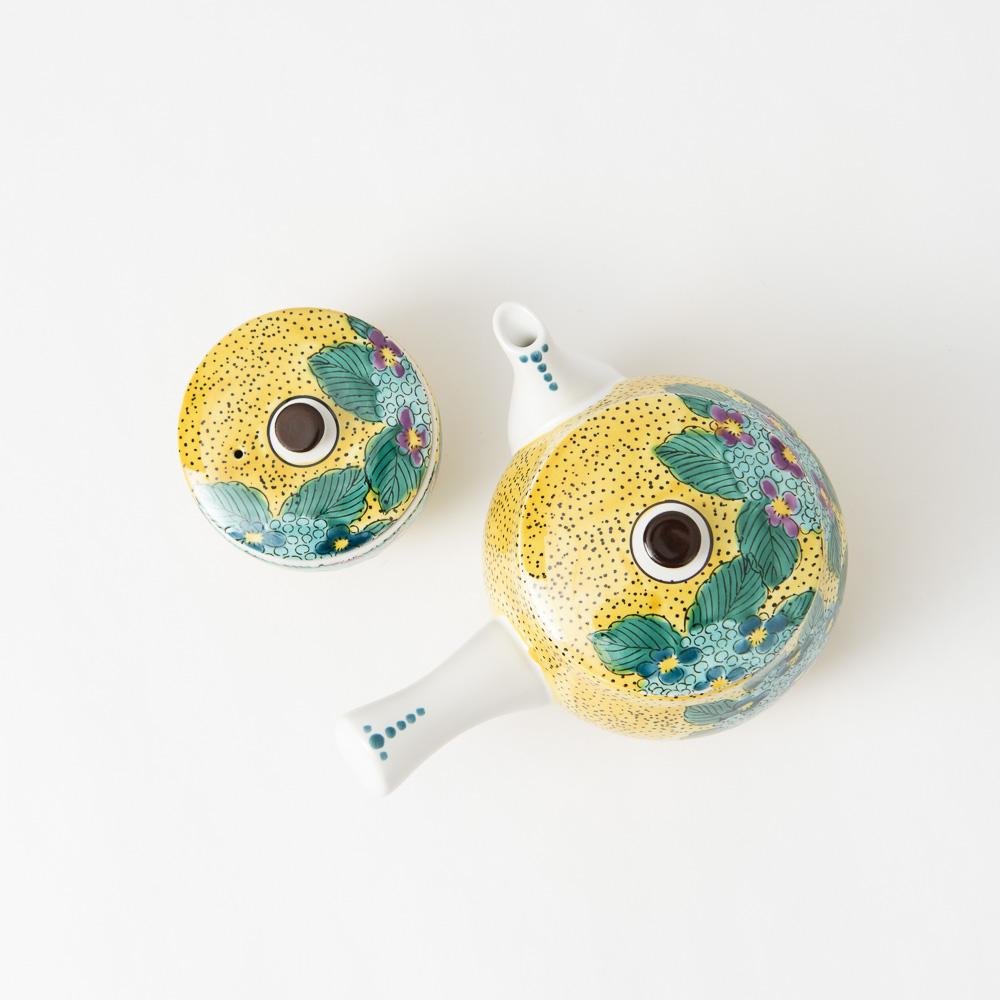
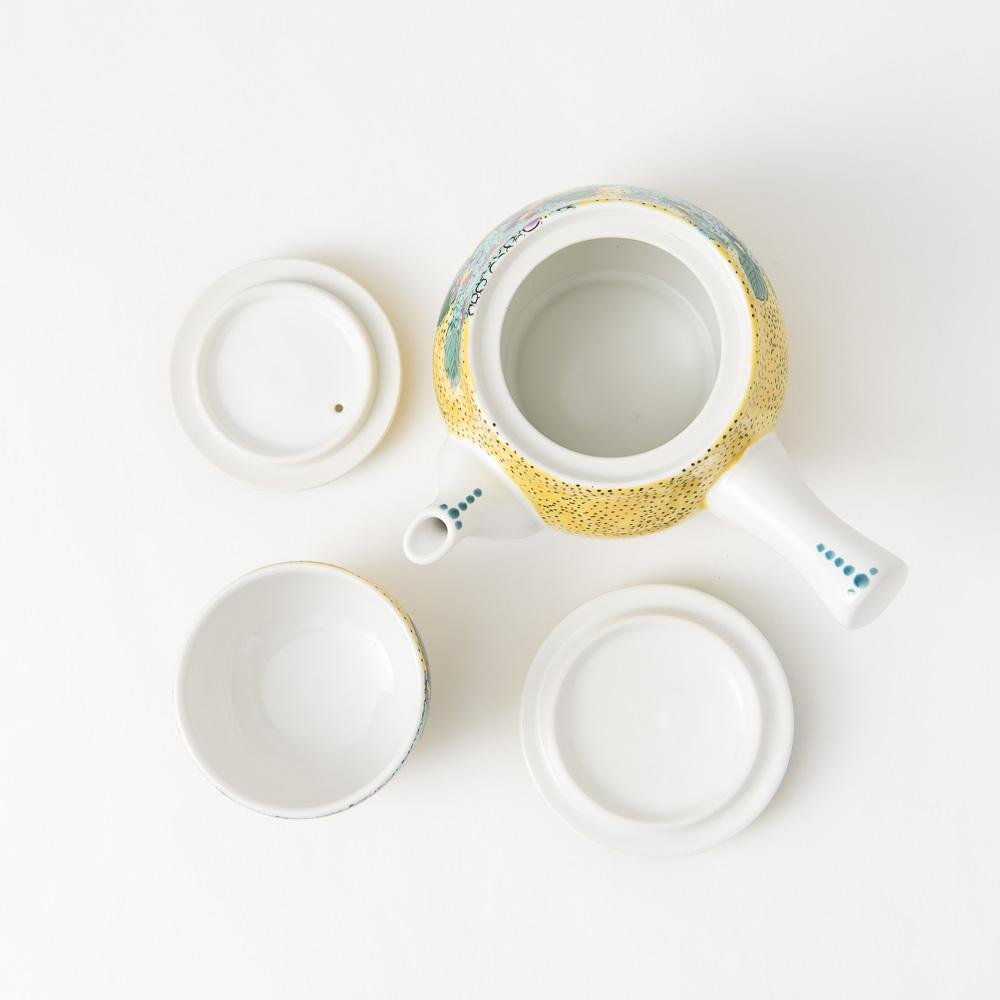
Yoshidaya Hydrangea Kutani Japanese Teapot Set
Estimated Shipping Widget will be displayed here!
This Japanese teapot set features beautiful Hydrangea on a yellow base with Yoshidaya style. Hydrangea flowers come in a variety of shades, such as blue and purple, and is one of the most popular flowers in Japan since ancient times. This tea set is also beautiful with its vivid colors. The smooth texture of porcelain feels relaxing and soft to your mouth, bringing out the rich yet delicate taste of Japanese green tea.
The tea strainer is called a "Sasame" and is attached directly to the inside of the teapot. This allows the tea leaves to circulate easily inside the pot, making the tea more fragrant. This is especially suitable for drinking high quality Japanese tea.
The teacup has a lid, making it very easy to use when welcoming important guests. You can create a more formal impression by combining it with this coaster.
It is perfect for a special occasion when enjoying Japanese tea with your family and guests, and also an extraordinary gift for ones who love Japanese culture.
This tea set, made by Japanese artisans using the traditional techniques of Kutani ware, is a design that will never go out of style and can be used for a long time.
For more Japanese tea item collection, tap here.
PRODUCT DETAIL
- Quantity: 1 pot and 5 cups
- Dimension: [Cup]D8.4cm(3.3in) x H5.4cm(2.1in)
- Capacity: [Teapot]500ml(17oz), [Cup]140ml(4.7oz)
- Material: Porcelain - Kutani ware
- Origin: Made in Japan
![]()
FEATURES
What is Yoshidaya Style?
Yoshidaya Style, which is one of the most famous traditional style of Kutani Ware, was first created by Yoshidaya Denemon in 1824. The four basic colors that are used within this plate are yellow, green, and aubergine. This style restored the painting style of Aote Ko-kutani. Yoshidaya painted the surface of the plate completely using only the 4 colors, yellow, green, dark blue and purple and never red.
Choose options




























